What'sNEW
January - March 2017
| 31 Mar 2017 |
What'sNEW about HGT  | | |
All members of the Melainabacteria and Sericytochromatia lack photosynthetic machinery, indicating that phototrophy was not an ancestral feature of the Cyanobacteria and that Oxyphotobacteria acquired the genes for photosynthesis relatively late in cyanobacterial evolution. These words come from a collaboration of Australian and Californian scientists investigating the rise of atmospheric oxygen and the role of cyanobacteria in that process.
In the legend for the figure here they write, "...The three Cyanobacteria classes likely acquired aerobic respiration independently after the rise of oxygen (atmospheric oxygen is represented by the red shading). Squares and triangles indicate acquisitions of complex III, whereas circles and diamonds indicate acquisitions of complex IV. ...Square brackets denote operon fusions, and a red 'X' indicates putative loss of ETCs." The report continues, "If true, we expect that other phyla will exhibit the same pattern for aerobic respiration as the Cyanobacteria—a lack of aerobic respiration in their last common ancestor, with a later acquisition involving lateral gene transfer."
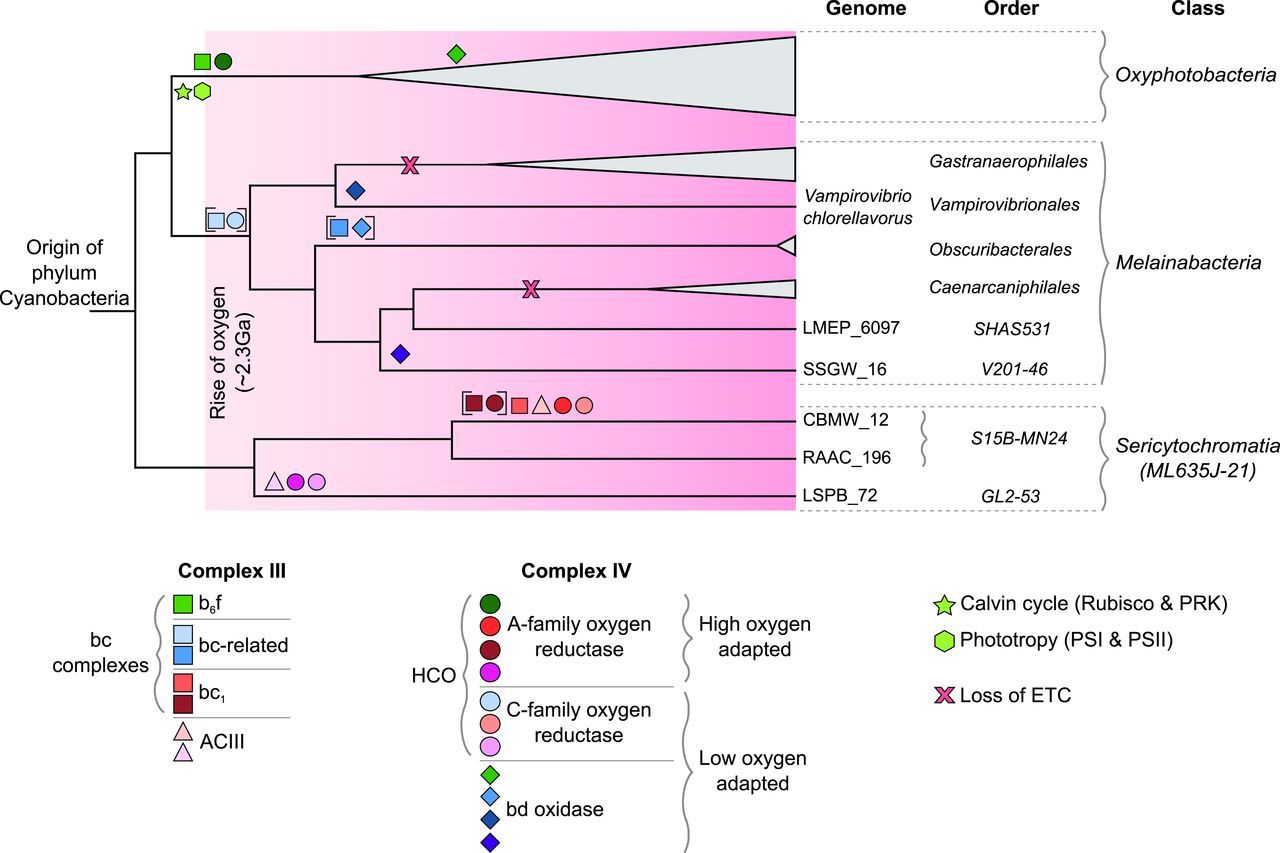
The term "origin" appears in the article and title, but it seems to mean "first deployment." Certainly, coordination and testing must follow the acquisition of genes and other genetic components to complete the installation of programs for aerobic respiration, photosynthesis, or any comparable evolutionary innovation. But the "origin" of any complex functional genetic program remains unobserved and unexplained. Meanwhile, evidence for horizontal gene transfer (HGT) grows daily. We think the underlying assumptions about evolution need to be reconsidered.
 On the origins of oxygenic photosynthesis and aerobic respiration in Cyanobacteria, by Rochelle M. Soo, James Hemp et al., doi:10.1126/science.aal3794, Science, 31 Mar 2017; and commentary: On the origins of oxygenic photosynthesis and aerobic respiration in Cyanobacteria, by Rochelle M. Soo, James Hemp et al., doi:10.1126/science.aal3794, Science, 31 Mar 2017; and commentary:
 How Cyanobacteria went green, by Robert E. Blankenship, Science, 31 Mar 2017. How Cyanobacteria went green, by Robert E. Blankenship, Science, 31 Mar 2017.
 Viruses... and Viruses... and
 Testing Darwinism... are related webpages. Testing Darwinism... are related webpages.
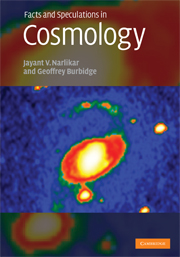 The big bang theory has many committed advocates, but doubts remain among an informed minority. These doubts get a full hearing in Facts and Speculations in Cosmology by Jayant Narlikar and Geoffrey Burbidge (2008). A brief history of early cosmology introduces a more comprehensive story of recent developments, with frequent illustrations and no difficult equations. The authors expose key assumptions unsupported by direct observation (e.g. inflation, cold dark matter, dark energy) that big-bangers must make, and numerous observations (e.g. anomalous red shifts) they must ignore.
The big bang theory has many committed advocates, but doubts remain among an informed minority. These doubts get a full hearing in Facts and Speculations in Cosmology by Jayant Narlikar and Geoffrey Burbidge (2008). A brief history of early cosmology introduces a more comprehensive story of recent developments, with frequent illustrations and no difficult equations. The authors expose key assumptions unsupported by direct observation (e.g. inflation, cold dark matter, dark energy) that big-bangers must make, and numerous observations (e.g. anomalous red shifts) they must ignore.
These distinguished cosmologists have witnessed the bias with which the story of modern cosmology is usually told. For one example: until 1998, the big bang theory confidently held that the expansion of the universe is decelerating. Then the very opposite, acceleration, was discovered. The shock was quickly swallowed with no mention of an interesting fact: acceleration was a basic prediction of the leading alternative, the steady-state theory.
Although the original steady-state theory of Gold, Bondi and Hoyle is now abandoned, a newer "quasi-steady-state" cosmology (QSSC), which Fred Hoyle also helped to develop, is well-explained and supported in the book. Along the way we learn about the contributions of astronomers seldom noticed elsewhere, like Viktor Ambartsumian and Hans Arp.
Narlikar and Burbidge confess that no theory today satisfactorily explains all the data, and since 2008, this situation has not improved. Meanwhile, dogmatic support for the big bang inhibits scientific imagination and hinders progress. The dogma also requires life to somehow originate, which, to us, looks forbiddingly improbable.
 Facts and Speculations in Cosmology, by Jayant Narlikar and Geoffrey Burbidge, ISBN-13: 9780521865043, Cambridge University Press, 2008. Facts and Speculations in Cosmology, by Jayant Narlikar and Geoffrey Burbidge, ISBN-13: 9780521865043, Cambridge University Press, 2008.
 The End and the Big Bang has more. The End and the Big Bang has more.
 George Nickas replies with comments, 27 Mar 2017. George Nickas replies with comments, 27 Mar 2017.
 20 May 2000: we review A Different Approach to Cosmology by Hoyle, Burbidge and Narlikar. 20 May 2000: we review A Different Approach to Cosmology by Hoyle, Burbidge and Narlikar.
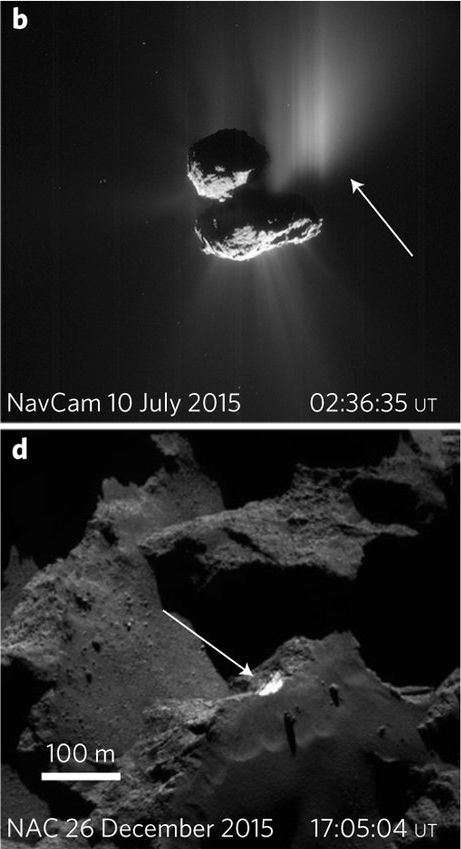 Rosetta saw a landslide on comet 67P. In July 2015, some 20,000 cubic meters of material collapsed from an escarpment that ESA scientists named Aswan cliff. The collapse coincided with outburst of material indicated by an arrow in the upper image, taken from the Rosetta orbiter 10 Jul 2015. (The usual jet activity occurring over the illuminated, bottom side of the comet is also visible.) Five days later, bright water ice exposed by the landslide was photographed. It ablated away, but some, indicated by an arrow in the lower image, was visible more than five months later. Concurrently, surface temperatures up to 340 K were measured. We note that surface overturning, water, warm temperatures and sunlight are hospitable to life.
Rosetta saw a landslide on comet 67P. In July 2015, some 20,000 cubic meters of material collapsed from an escarpment that ESA scientists named Aswan cliff. The collapse coincided with outburst of material indicated by an arrow in the upper image, taken from the Rosetta orbiter 10 Jul 2015. (The usual jet activity occurring over the illuminated, bottom side of the comet is also visible.) Five days later, bright water ice exposed by the landslide was photographed. It ablated away, but some, indicated by an arrow in the lower image, was visible more than five months later. Concurrently, surface temperatures up to 340 K were measured. We note that surface overturning, water, warm temperatures and sunlight are hospitable to life.
 The pristine interior of comet 67P revealed by the combined Aswan outburst and cliff collapse, by M. Pajola et al., Nature Astronomy, online 21 Mar 2017. The pristine interior of comet 67P revealed by the combined Aswan outburst and cliff collapse, by M. Pajola et al., Nature Astronomy, online 21 Mar 2017.
 Surface changes on comet 67P/Churyumov-Gerasimenko suggest a more active past, by M. Ramy El-Maarry et al., Science, online 21 Mar 2017. Surface changes on comet 67P/Churyumov-Gerasimenko suggest a more active past, by M. Ramy El-Maarry et al., Science, online 21 Mar 2017.
 Landslides cause comet eruptions, Nature, 30 Mar 2017. Landslides cause comet eruptions, Nature, 30 Mar 2017.
 The Many Faces of Rosetta's Comet 67P, NASA / JPL / ESA, 21 Mar 2017. The Many Faces of Rosetta's Comet 67P, NASA / JPL / ESA, 21 Mar 2017.
 Scientists captured incredible photographic proof of a landslide on a comet, by Sarah Kaplan, The Washington Post, 21 Mar 2017. Scientists captured incredible photographic proof of a landslide on a comet, by Sarah Kaplan, The Washington Post, 21 Mar 2017.
 Thanks, Richard Hoover. Thanks, Richard Hoover.
 Comets: The Delivery System is a related local webpage. Comets: The Delivery System is a related local webpage.
 Comet Rendezvous includes all of our updates about Rosetta. Comet Rendezvous includes all of our updates about Rosetta.
 Why a NASA spacecraft could bounce, crunch or sink on icy Europa, by Alexandra Witze, Nature, 21 Mar 2017. Why a NASA spacecraft could bounce, crunch or sink on icy Europa, by Alexandra Witze, Nature, 21 Mar 2017.
 Life on Europa... has related links. Life on Europa... has related links.
 Enhanced interplanetary panspermia in the TRAPPIST-1 system, by Manasvi Lingam and Abraham Loeb, arXiv.org, 15 Mar 2017; also doi:10.1073/pnas.1703517114, PNAS, online 13 Jun 2017. Enhanced interplanetary panspermia in the TRAPPIST-1 system, by Manasvi Lingam and Abraham Loeb, arXiv.org, 15 Mar 2017; also doi:10.1073/pnas.1703517114, PNAS, online 13 Jun 2017.
 7 Alien 'Earths' May Be Swapping Life via Meteorites, by Shannon Hall, NationalGeographic, 22 Mar 2017. 7 Alien 'Earths' May Be Swapping Life via Meteorites, by Shannon Hall, NationalGeographic, 22 Mar 2017.
 Life on TRAPPIST-1 Planets? Rock-Swapping May Boost Odds, by Mike Wall, Space.com, 23 Jun 2017. Life on TRAPPIST-1 Planets? Rock-Swapping May Boost Odds, by Mike Wall, Space.com, 23 Jun 2017.
 Thanks, Bob Sweeney, Stan Franklin, Google Alerts, Chandra Wickramasinghe, Ronnie McGhee and Bill Smith. Thanks, Bob Sweeney, Stan Franklin, Google Alerts, Chandra Wickramasinghe, Ronnie McGhee and Bill Smith.
 TRAPPIST-1... our first notice about these planets, posted 22 Feb 2017. TRAPPIST-1... our first notice about these planets, posted 22 Feb 2017.
...the tree of life is infected by viruses from the root to the leaves — Patrick Forterre et al.
 Cellular domains and viral lineages, Trends in Microbiology, October 2014. Cellular domains and viral lineages, Trends in Microbiology, October 2014.
 Viruses... is our main related webpage. Viruses... is our main related webpage.
 Thanks, Suzan Mazur, for your HuffPost entry of 17 Mar 2017. Thanks, Suzan Mazur, for your HuffPost entry of 17 Mar 2017.
Seeing through mythologies and debunking them is what real science is all about — Robert B. Laughlin,
 A Different Universe: Reinventing Physics from the Bottom Down, Perseus Books, 2005. A Different Universe: Reinventing Physics from the Bottom Down, Perseus Books, 2005.
| 09 Mar 2017 |
What'sNEW about HGT  | | |
...we obtained evidence that KZPFs [KRAB zinc-finger proteins] exploit evolutionarily conserved fragments of transposable elements as regulatory platforms long after the arms race against these genetic invaders has ended. Together, our results demonstrate that KZFPs partner with transposable elements to build a largely species-restricted layer of epigenetic regulation. These words come from a study by geneticists in Lausanne, Switzerland, who investigated the evolutionary emergence of KZFP genes in vertebrates and their targets in the human genome.
The chart shows the number of KZFP-like genetic units (including pseudogenes) in indicated genomes, ordered by taxonomic class. To us, the study provides another example of evolutionary progress made possible by pre-existing genetic programs that have been imported into the genomes of receptive species, perhaps in pieces, perhaps long ago.
 KRAB zinc-finger proteins contribute to the evolution of gene regulatory networks, by Michaël Imbeault, Pierre-Yves Helleboid and Didier Trono, doi:10.1038/nature21683, Nature, online 08 Mar 2017. KRAB zinc-finger proteins contribute to the evolution of gene regulatory networks, by Michaël Imbeault, Pierre-Yves Helleboid and Didier Trono, doi:10.1038/nature21683, Nature, online 08 Mar 2017.
 Viruses... is our main webpage about pre-existing genetic programs that are imported. Viruses... is our main webpage about pre-existing genetic programs that are imported.
Our results therefore indicate that simple sterol biosynthesis existed well before the diversification of living eukaryotes, substantially predating the oldest detected sterane biomarkers....
 Paleoproterozoic sterol biosynthesis and the rise of oxygen, by David A. Gold et al., doi:10.1038/nature21412, Nature, 06 Mar 2017. Paleoproterozoic sterol biosynthesis and the rise of oxygen, by David A. Gold et al., doi:10.1038/nature21412, Nature, 06 Mar 2017.
 Study suggests complex life was present on Earth 2.33 billion years ago, by Jennifer Chu, MIT News Office (+Physorg.com), 06 Mar 2017. Study suggests complex life was present on Earth 2.33 billion years ago, by Jennifer Chu, MIT News Office (+Physorg.com), 06 Mar 2017.
 Thanks, Stan Franklin. Thanks, Stan Franklin.
 Metazoan Genes Older Than Metazoa? and Metazoan Genes Older Than Metazoa? and
 Genes Older Than Earth? cite many more examples of complexity early. Genes Older Than Earth? cite many more examples of complexity early.
| 07 Mar 2017 |
What'sNEW about HGT  | | |
...the origin of viral replicative modules seems likely to hark all the way back to the precellular era. So say Mart Krupovic and Eugene V. Koonin in another study that compares and classifies conserved protein structures. This time the focus is on the capsid proteins that encase the viral genome. Many of them have homologs that are ubiquitous across life's domains. The conclusion, consistent with others, is that the proteins may be older than cellular life.
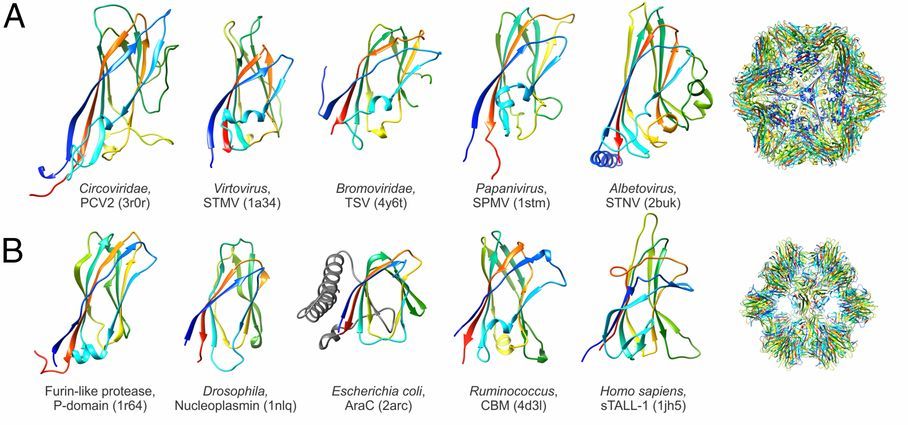 To make sense of this apparent absurdity within a strictly darwinian paradigm, Krupovic and Koonin ultimately imagine unexplained, unobserved "origins." But we endorse their fully-grounded observations:
These findings reveal a stronger connection between the virosphere and cellular life forms than previously suspected. ...this view is compatible with the scenario of multiple recruitment events occurring throughout the course of evolution of life.
To make sense of this apparent absurdity within a strictly darwinian paradigm, Krupovic and Koonin ultimately imagine unexplained, unobserved "origins." But we endorse their fully-grounded observations:
These findings reveal a stronger connection between the virosphere and cellular life forms than previously suspected. ...this view is compatible with the scenario of multiple recruitment events occurring throughout the course of evolution of life.
 Multiple origins of viral capsid proteins from cellular ancestors, by Mart Krupovic and Eugene V. Koonin, doi:10.1073/pnas.1621061114, PNAS, online 06 Mar 2017. Multiple origins of viral capsid proteins from cellular ancestors, by Mart Krupovic and Eugene V. Koonin, doi:10.1073/pnas.1621061114, PNAS, online 06 Mar 2017.
 Viruses..., Viruses...,
 Metazoan Genes Older Than Metazoa? and Metazoan Genes Older Than Metazoa? and
 Genes Older Than Earth? are related local webpages. Genes Older Than Earth? are related local webpages.
 New Evidence for a Water-Rich History on Mars, by Glenn Roberts Jr., Lawrence Berkeley National Laboratory
(+Newswise), 06 Mar 2017. New Evidence for a Water-Rich History on Mars, by Glenn Roberts Jr., Lawrence Berkeley National Laboratory
(+Newswise), 06 Mar 2017.
 Life on Mars! has lots about water there.
...we suggest that at least one methanogen, M. wolfeii, could survive in the deep subsurface environment of Mars. Life on Mars! has lots about water there.
...we suggest that at least one methanogen, M. wolfeii, could survive in the deep subsurface environment of Mars.
 Survivability and growth kinetics of methanogenic archaea at various pHs and pressures: Implications for deep subsurface life on Mars, by Navita Sinha et al., doi:10.1016/j.pss.2016.11.012, Planetary and Space Science, Feb 2017. Survivability and growth kinetics of methanogenic archaea at various pHs and pressures: Implications for deep subsurface life on Mars, by Navita Sinha et al., doi:10.1016/j.pss.2016.11.012, Planetary and Space Science, Feb 2017.
 Is Anything Tough Enough To Survive on Mars?, by Bob Whitby, Arkansas Center for Space and Planetary Sciences (+Newswise +Mars Daily), first posted 28 Feb 2017. Is Anything Tough Enough To Survive on Mars?, by Bob Whitby, Arkansas Center for Space and Planetary Sciences (+Newswise +Mars Daily), first posted 28 Feb 2017.
 Bacteria... has more about their survival capabilities. Bacteria... has more about their survival capabilities.
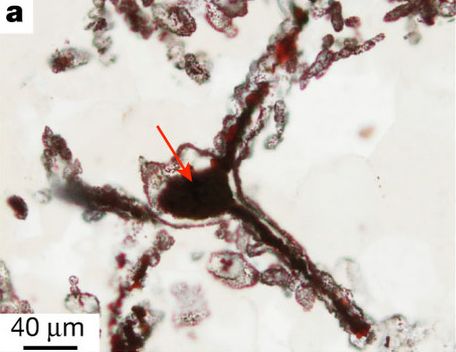 Uniformitarianism... leads us to conclude that haematite tubes and filaments within the NSB jaspers are the mineralized remains of bacterial sheaths and extracellular filaments. ...that are at least 3,770 million and possibly 4,280 million years old.... These words come from an article by an international multi-disciplinary team analysing sediments apparently from ancient hydrothermal vents. If correct, it would mean that life on Earth may have begun even earlier than we thought. It would also strengthen the case that life could thrive near hydrothermal vents on ocean worlds like Europa, Enceladus and others.
Uniformitarianism... leads us to conclude that haematite tubes and filaments within the NSB jaspers are the mineralized remains of bacterial sheaths and extracellular filaments. ...that are at least 3,770 million and possibly 4,280 million years old.... These words come from an article by an international multi-disciplinary team analysing sediments apparently from ancient hydrothermal vents. If correct, it would mean that life on Earth may have begun even earlier than we thought. It would also strengthen the case that life could thrive near hydrothermal vents on ocean worlds like Europa, Enceladus and others.
 Evidence for early life in Earth's oldest hydrothermal vent precipitates, by Matthew S. Dodd, Dominic Papineau et al., Nature, 01 Mar 2017. Evidence for early life in Earth's oldest hydrothermal vent precipitates, by Matthew S. Dodd, Dominic Papineau et al., Nature, 01 Mar 2017.
 Earliest evidence of life on Earth 'found', by Pallab Ghosh, BBC News, 01 Mar 2017. Earliest evidence of life on Earth 'found', by Pallab Ghosh, BBC News, 01 Mar 2017.
 This May Be the Oldest Known Sign of Life on Earth, by Nadia Drake, NationalGeographic, 01 Mar 2017. This May Be the Oldest Known Sign of Life on Earth, by Nadia Drake, NationalGeographic, 01 Mar 2017.
 Discovery of Earth's Oldest Fossils Could Spur the Search for Life on Other Planets, by Irene Klotz, Seeker.com (+Space.com), 03 Mar 2017. Discovery of Earth's Oldest Fossils Could Spur the Search for Life on Other Planets, by Irene Klotz, Seeker.com (+Space.com), 03 Mar 2017.
 "Life from space" [jpeg], by Chandra Wickramasinghe, The Daily Telegraph, 03 Mar 2017. "Life from space" [jpeg], by Chandra Wickramasinghe, The Daily Telegraph, 03 Mar 2017.
 Thanks, Chandra, Bob Sweeney, Martin Langford, NPR, Ellen Klyce, Ted Steele, Bill Smith and Ronnie McGhee. Thanks, Chandra, Bob Sweeney, Martin Langford, NPR, Ellen Klyce, Ted Steele, Bill Smith and Ronnie McGhee.
 Life Before 3850 Million Years Ago? has more evidence for early life on Earth. Life Before 3850 Million Years Ago? has more evidence for early life on Earth.
 Life on Europa... has links about ocean worlds. Life on Europa... has links about ocean worlds.
 Manganese Oxides Resembling Microbial Fabrics... by A.D. Muscente et al., Astrobiology, online 12 Mar 2018. Manganese Oxides Resembling Microbial Fabrics... by A.D. Muscente et al., Astrobiology, online 12 Mar 2018.
It seems paradoxical. ...Cells are able to adapt ultra-rapidly to zero gravity. However, they were never exposed to it in the evolution of life on Earth — University of Zurich astrobiologist Cora Thiel
 Cells adapt ultra-rapidly to zero gravity, UZH News (+ScienceDaily), 28 Feb 2017; re: Cells adapt ultra-rapidly to zero gravity, UZH News (+ScienceDaily), 28 Feb 2017; re:
 Rapid adaptation to microgravity in mammalian macrophage cells, by Cora S. Thiel et al., Scientific Reports, doi:10.1038/s41598-017-00119-6, online, 27 Feb 2017. Rapid adaptation to microgravity in mammalian macrophage cells, by Cora S. Thiel et al., Scientific Reports, doi:10.1038/s41598-017-00119-6, online, 27 Feb 2017.
 Thanks, Chandra Wickramasinge, for noticing: if life comes from space, it's less paradoxical. Thanks, Chandra Wickramasinge, for noticing: if life comes from space, it's less paradoxical.
More and more studies are concluding that life's earliest ancestors were more complex than bacteria. Lately, these conclusions come from research that compares and classifies protein domains, said to be better conserved than genes. Traditionally, it was assumed that the ancestor of the modern tree of life is a minimalist first cell that evolved by accumulating increasingly numerous and diverse coding sequences to reach the complexities of modern genomes. In fact, the root of the modern tree of life seems to be quite complex. ...The only sure thing now is that the common ancestor ...did encode many of the protein domains of all three super-kingdoms.
 Evolution of Cells, Genomes and Proteins, a conference at Nanyang Technological University, 1-3 Feb 2016. Evolution of Cells, Genomes and Proteins, a conference at Nanyang Technological University, 1-3 Feb 2016.
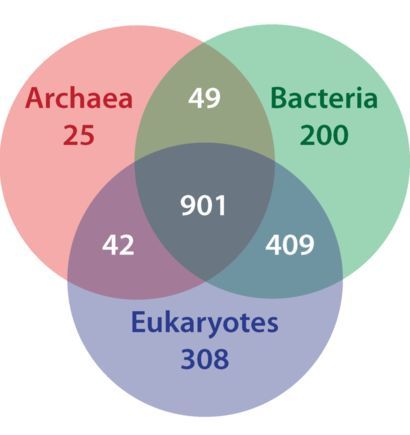 The distribution of recognized protein superfamilies shows extensive overlap among the 3 domains of life (diagram). The "complexity early" which this distribution reconfirms is a jarring surprise for darwinists. We wish the surprise would prompt them to notice cosmic ancestry, which predicts, "Life can only descend from ancestors at least as highly evolved as itself." Meanwhile, mainstream speculations about the origin of life and the tree of life must be wrong. Two experts in "the structural classification of proteins" (SCOP), discuss its use and implications in a recent interview:
The distribution of recognized protein superfamilies shows extensive overlap among the 3 domains of life (diagram). The "complexity early" which this distribution reconfirms is a jarring surprise for darwinists. We wish the surprise would prompt them to notice cosmic ancestry, which predicts, "Life can only descend from ancestors at least as highly evolved as itself." Meanwhile, mainstream speculations about the origin of life and the tree of life must be wrong. Two experts in "the structural classification of proteins" (SCOP), discuss its use and implications in a recent interview:
 Kurland & Harish Rethink Deep Evolution (Part 1), Interview with Suzan Mazur, Huffington Post, online 26 Feb, and Part 2, online 27 Feb 2017. Kurland & Harish Rethink Deep Evolution (Part 1), Interview with Suzan Mazur, Huffington Post, online 26 Feb, and Part 2, online 27 Feb 2017.
 The Tree of Life and The Tree of Life and  The RNA World... are related local webpages. The RNA World... are related local webpages.
 Metazoan Genes Older Than Metazoa?
and Metazoan Genes Older Than Metazoa?
and
 Genes Older Than Earth? also points to "complexity early." Genes Older Than Earth? also points to "complexity early."
 19 Feb 2017: Archeae contain many eukaryotic signature proteins (ESPs). 19 Feb 2017: Archeae contain many eukaryotic signature proteins (ESPs).
| 23 Feb 2017 |
What'sNEW about HGT  | | |
The horizontal transfer of transposable elements ...should be regarded as a pivotal force in eukaryotic genome evolution.
 Ecological networks to unravel the routes to horizontal transposon transfers, by Venner S, Miele V, Terzian C, Biémont C, Daubin V, Feschotte C, et al., doi:10.1371/journal.pbio.2001536, PLOS Biology, 15 February 2017. Ecological networks to unravel the routes to horizontal transposon transfers, by Venner S, Miele V, Terzian C, Biémont C, Daubin V, Feschotte C, et al., doi:10.1371/journal.pbio.2001536, PLOS Biology, 15 February 2017.
 Viruses... has links to many examples of the horizontal transfer of genetic material affecting eukaryotes. Viruses... has links to many examples of the horizontal transfer of genetic material affecting eukaryotes.
Our observations reveal that at least seven planets with sizes and masses similar to those of Earth revolve around TRAPPIST-1. ...[They] have equilibrium temperatures low enough to make possible the presence of liquid water on their surfaces.

 Seven temperate terrestrial planets around the nearby ultracool dwarf star TRAPPIST-1, by Michaël Gillon et al., doi:10.1038/nature21360, Nature, 23 February 2017. Seven temperate terrestrial planets around the nearby ultracool dwarf star TRAPPIST-1, by Michaël Gillon et al., doi:10.1038/nature21360, Nature, 23 February 2017.
 Scientists discover 7 'Earthlike' planets orbiting a nearby star by Sarah Kaplan, The Washington Post, 22 Feb 2017. Scientists discover 7 'Earthlike' planets orbiting a nearby star by Sarah Kaplan, The Washington Post, 22 Feb 2017.
 "On the eve of War, Churchill wrote essay about extraterrestrial life," by Traci Watson, USA Today, 16 Feb, 2017. He was not "sufficiently conceited to think that my sun is the only one with a family of planets." "On the eve of War, Churchill wrote essay about extraterrestrial life," by Traci Watson, USA Today, 16 Feb, 2017. He was not "sufficiently conceited to think that my sun is the only one with a family of planets."
 Life on Europa, Other Moons, Other Planets?... has related links. Life on Europa, Other Moons, Other Planets?... has related links.
 Thanks, Bob Sweeney and Ronnie McGhee. Thanks, Bob Sweeney and Ronnie McGhee.
 "Life's beginnings" [jpeg], by Chandra Wickramasinghe, London Times, 27 Feb, 2017. "Life's beginnings" [jpeg], by Chandra Wickramasinghe, London Times, 27 Feb, 2017.
 More about TRAPPIST-1, 22 Mar 2017. More about TRAPPIST-1, 22 Mar 2017.
 Naica's crystal caves hold long-dormant life by Jonathan Amos, BBC, 18 Feb 2017. Naica's crystal caves hold long-dormant life by Jonathan Amos, BBC, 18 Feb 2017.
 Weird Life Found Trapped in Giant Underground Crystals, by Victoria Jaggard, NationalGeographic, 17 Feb 2017. Weird Life Found Trapped in Giant Underground Crystals, by Victoria Jaggard, NationalGeographic, 17 Feb 2017.
 Bacteria... is a related webpage. Bacteria... is a related webpage.
 Thanks, Stan Franklin. Thanks, Stan Franklin.
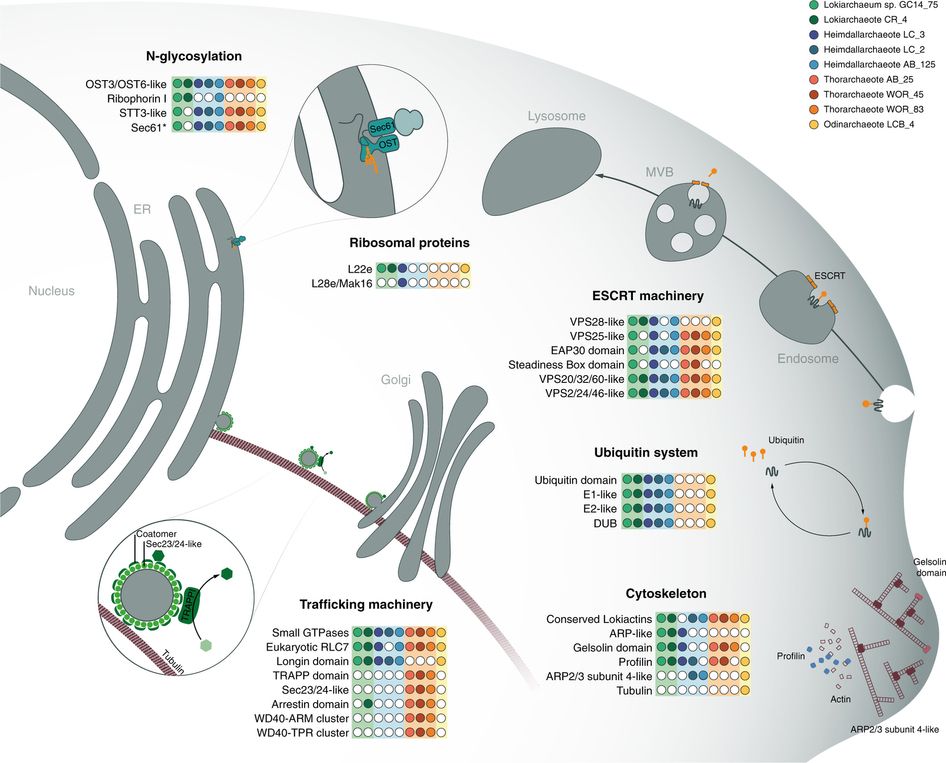 Archeae contain many eukaryotic signature proteins (ESPs). Some of them previously identified are GTPases, actin homologues, ubiquitin modifier system components and homologues of eukaryotic protein translocation and glycosylation pathways.
Archeae contain many eukaryotic signature proteins (ESPs). Some of them previously identified are GTPases, actin homologues, ubiquitin modifier system components and homologues of eukaryotic protein translocation and glycosylation pathways.
Now more ESPs are seen among a newly-designated clade of archae named Asgard. They include a subunit of eukaryotic DNA polymerase, a eukaryotic ribosomal protein, key components of the eukaryotic cytoskeleton, and membrane trafficking proteins. The schematic representation of a eukaryotic cell (right) highlights ESPs that have been identified in Asgard archaea, with colored tables indicating their distribution among those species.
The overall picture indicates that the archaeal ancestor of eukaryotes already contained many key components underlying the emergence of cellular complexity that is characteristic of eukaryotes, this research team says in summary. As darwinists, they suppose that an archaeal ancestor must have had some use for the ESPs after all. But in cosmic ancestry, genes always come first. If they weren't often found in species preceding the need for them, we would be surprised.
 Asgard archaea illuminate the origin of eukaryotic cellular complexity, Katarzyna Zaremba-Niedzwiedzka et al., doi:10.1038/nature21031, Nature, 19 Jan 2017; and commentary: Asgard archaea illuminate the origin of eukaryotic cellular complexity, Katarzyna Zaremba-Niedzwiedzka et al., doi:10.1038/nature21031, Nature, 19 Jan 2017; and commentary:
 Mind the gaps in cellular evolution, by McInerney and O'Connell, Nature, 19 Jan 2017. Mind the gaps in cellular evolution, by McInerney and O'Connell, Nature, 19 Jan 2017.
 Metazoan Genes Older Than Metazoa? and Metazoan Genes Older Than Metazoa? and  Genes Older Than Earth? are related webpages. Genes Older Than Earth? are related webpages.
 the origin of life is the subject of our email to Ted Steele, 17 Feb 2017. the origin of life is the subject of our email to Ted Steele, 17 Feb 2017.
| 17 Feb 2017 |
What'sNEW about HGT  | | |
...giant viruses present an astonishing arsenal of genes not widespread in the virosphere, some of them related to important steps of the translational process.... This remark comes from a team of French and Brazilian virologists who are especially interested in mimiviruses. These viruses (example pictured) have a genome that resides in a linear dsDNA molecule of up to ~1,250 Kb that may have ~1,000 open reading frames. Some of the ORFs are genes related to protein synthesis, tRNAs, and translation factors, a complete surprise.
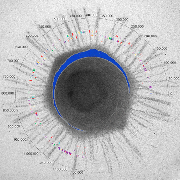
The researchers are specifically interested in the phylogeny and ultimate origin of the mimiviruses. Were their [viral?] ancestors even more complex, or less complex? Despite many theories, the origin and evolution of mimiviruses remains a breathtaking mystery. It is not yet possible to exclude any specific scenario of giant viruses' evolution.
In that case, we hope evolutionary theorist will consider the scenario we advocate. In cosmic ancestry, viruses are the main vector for the horizontal transfer (HGT) of cellular genes into species that can use them. We are not surprised if mimiviruses contain genes for tRNAs, protein synthesis, translation factors and more.
 The analysis of translation-related gene set boosts debates around origin and evolution of mimiviruses, Jônatas Santos Abrahão, Rodrigo Araújo et al., PLOS Genetics, 16 Feb 2017. The analysis of translation-related gene set boosts debates around origin and evolution of mimiviruses, Jônatas Santos Abrahão, Rodrigo Araújo et al., PLOS Genetics, 16 Feb 2017.
 Viruses... has a primer and links to ~1,000 examples of HGT, mostly by viruses. Viruses... has a primer and links to ~1,000 examples of HGT, mostly by viruses.
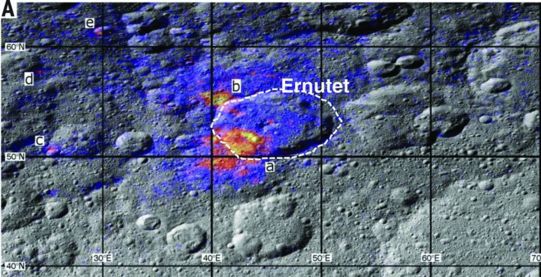 Ceres ...joins Mars and several satellites of the giant planets in the list of locations in the solar system that may harbor life. The dwarf planet has water. Now, infrared spectra taken from the orbiting Dawn spacecraft reveal organic-rich regions in and around its ~50-kilometer Ernutet crater.
Ceres ...joins Mars and several satellites of the giant planets in the list of locations in the solar system that may harbor life. The dwarf planet has water. Now, infrared spectra taken from the orbiting Dawn spacecraft reveal organic-rich regions in and around its ~50-kilometer Ernutet crater.
 Localized aliphatic organic material on the surface of Ceres, by M. C. De Sanctis et al., doi:10.1126/science.aaj2305; and commentary:
Dwarf planet Ceres and the ingredients of life, by Michael Küppers, Science, 17 Feb 2017. Localized aliphatic organic material on the surface of Ceres, by M. C. De Sanctis et al., doi:10.1126/science.aaj2305; and commentary:
Dwarf planet Ceres and the ingredients of life, by Michael Küppers, Science, 17 Feb 2017.
 Life's Building Blocks Found on Dwarf Planet Ceres by Mike Wall, Space.com, 16 Feb 2017. Life's Building Blocks Found on Dwarf Planet Ceres by Mike Wall, Space.com, 16 Feb 2017.
 Thanks, Ronnie McGhee. Thanks, Ronnie McGhee.
 Life on Europa, Other Moons, Other Planets?... has related links. Life on Europa, Other Moons, Other Planets?... has related links.
 12 Jan 2018 & 12 Jan 2018 &  15 Mar 2018: more about Ceres. 15 Mar 2018: more about Ceres.
 Organics on Ceres may be more abundant than originally thought, Brown University (+PhysOrg.com), 13 Jun 2018. Organics on Ceres may be more abundant than originally thought, Brown University (+PhysOrg.com), 13 Jun 2018.
 Chandra Wickramasinghe is interviewed about his early life and education by Newsfirst Sri Lanka: 30-min. YouTube video posted 07 Feb 2017. Chandra Wickramasinghe is interviewed about his early life and education by Newsfirst Sri Lanka: 30-min. YouTube video posted 07 Feb 2017.
 Wickramasinghe's 1981 statement in Arkansas precedes more links about him. Wickramasinghe's 1981 statement in Arkansas precedes more links about him.
...All our conclusions on the course of evolution until the advent of genomics had been indirect.
 Eugene V. Koonin interviewed by Suzan Mazur, Huffington Post, transcript online 03 Feb 2017.
...multi-cellular eukaryotes ...are actually a derived and highly constrained evolutionary subset of the biosphere. Eugene V. Koonin interviewed by Suzan Mazur, Huffington Post, transcript online 03 Feb 2017.
...multi-cellular eukaryotes ...are actually a derived and highly constrained evolutionary subset of the biosphere.
 Advances in biodiversity: metagenomics and the unveiling of biological dark matter, by Robert J. Robbins, Leonard Krishtalka and John C. Wooley, doi:10.1186/s40793-016-0180-8, Stand Genomic Sci., online 09 Sep 2016. Advances in biodiversity: metagenomics and the unveiling of biological dark matter, by Robert J. Robbins, Leonard Krishtalka and John C. Wooley, doi:10.1186/s40793-016-0180-8, Stand Genomic Sci., online 09 Sep 2016.
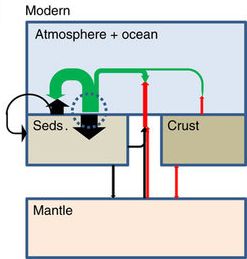 Earth's atmosphere contained only 2% to 4% oxygen for a billion years, before the arrival of land plants about 470 million years ago. Then photosynthesis doubled. Forty million years later, land animals began to emerge.
Earth's atmosphere contained only 2% to 4% oxygen for a billion years, before the arrival of land plants about 470 million years ago. Then photosynthesis doubled. Forty million years later, land animals began to emerge.
We take this synopsis from a comprehensive new study by geographers at the University of Exeter, UK, who modeled the processes in the biosphere that produce and consume oxygen. Its history, including the long stasis, is puzzling. With isotope data, they make a plausible case that mineral, tectonic, biological, climatic, weathering and sedimentary processes with feedback loops can explain it. The study also supports our belief that slow Gaian processes can make a planet habitable, and then more advanced life can develop and flourish without delay.
|
The mechanism we describe provides a potential explanation for the overall stepwise evolution of atmospheric oxygen on Earth. Recycling of sedimentary organic carbon and its kinetically limited oxidation could have sustained low Proterozoic atmospheric oxygen levels.... The rise of oxygen to present levels simply required an increase in organic carbon burial rate, which may have begun in the Neoproterozoic Era, but in our model was not completed until the mid-Palaeozoic Era with the colonization of the land by plants and fungi, liberating nutrient phosphorus from rocks and producing high C/P material for burial. |
 Atmospheric oxygen regulation at low Proterozoic levels by incomplete oxidative weathering of sedimentary organic carbon, by Stuart J. Daines, Benjamin J. W. Mills and Timothy M. Lenton, doi:10.1038/ncomms14379, Nature Communications, online 02 Feb 2017; and commentary: Atmospheric oxygen regulation at low Proterozoic levels by incomplete oxidative weathering of sedimentary organic carbon, by Stuart J. Daines, Benjamin J. W. Mills and Timothy M. Lenton, doi:10.1038/ncomms14379, Nature Communications, online 02 Feb 2017; and commentary:
 Low level of oxygen in Earth's middle ages delayed evolution for two billion years, University of Exeter (+PhysOrg.com), 02 Feb 2017. Low level of oxygen in Earth's middle ages delayed evolution for two billion years, University of Exeter (+PhysOrg.com), 02 Feb 2017.
 Gaia has a primer and related links. Gaia has a primer and related links.
 19 Aug 2019: Paleologists have analyzed the Ordovician surge in biodiversity. 19 Aug 2019: Paleologists have analyzed the Ordovician surge in biodiversity.
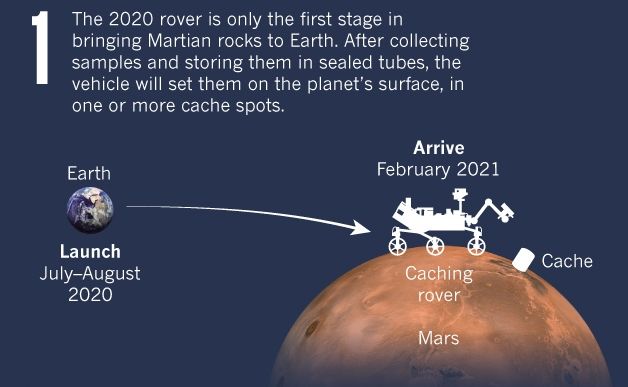
 Bursts of methane may have warmed early Mars, by Leah Burrows, Harvard Paulson School (+Newswise), 24 Jan 2017. Bursts of methane may have warmed early Mars, by Leah Burrows, Harvard Paulson School (+Newswise), 24 Jan 2017.
 Gaia is a possibly related webpage. Did bacteria make the methane?
NASA is now building the rover that it hopes will bring back signs of life on the red planet. Gaia is a possibly related webpage. Did bacteria make the methane?
NASA is now building the rover that it hopes will bring back signs of life on the red planet.
 The $2.4-billion plan to steal a rock from Mars, by Alexandra Witze, Nature News Feature, 18 Jan 2017. The $2.4-billion plan to steal a rock from Mars, by Alexandra Witze, Nature News Feature, 18 Jan 2017.
 Life on Mars! has historical information and links. Life on Mars! has historical information and links.
| 17 Jan 2017 |
What'sNEW about HGT  | | |
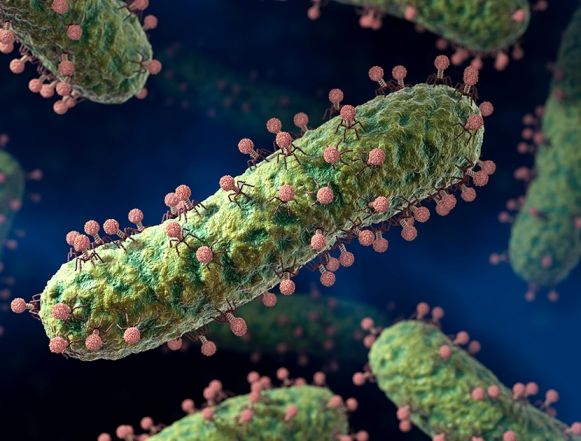 A virus that infects bacteria listens to messages from its relatives when deciding how to attack its hosts.
A virus that infects bacteria listens to messages from its relatives when deciding how to attack its hosts.
 ...Phages caught sending chemical messages, by Ewen Callaway, Nature News, 18 Jan 2017, re: ...Phages caught sending chemical messages, by Ewen Callaway, Nature News, 18 Jan 2017, re:
 Communication between viruses guides lysis-lysogeny decisions, by Zohar Erez et al., doi:10.1038/nature21049; and commentary:
...Phages make a group decision by Alan R. Davidson, Nature, 18 Jan 2017. Communication between viruses guides lysis-lysogeny decisions, by Zohar Erez et al., doi:10.1038/nature21049; and commentary:
...Phages make a group decision by Alan R. Davidson, Nature, 18 Jan 2017.
...the choice [between lysis and lysogeny] in some phages is also profoundly influenced by communication, by means of small molecules, between phages infecting other cells in a culture.
We know that horizontal gene transfer (HGT) by viruses affects evolution. This new discovery makes their power among prokaryotes even more impressive.
 Viruses... has a primer and related links. Viruses... has a primer and related links.
Scientists at the University of Chicago have created the first genetically modified animals containing reconstructed ancient genes, which they used to test the evolutionary effects of genetic changes that happened in the deep past on the animals' biology and fitness. ...The specific findings, involving the fruit fly's ability to break down alcohol in rotting fruit, overturn a widely-held hypothesis about the molecular causes of one of evolutionary biology's classic cases of adaptation.

The new method, pioneered in Joe Thornton's lab, apparently opens a new way to study adaptation. In our understanding, adaptation on the scale examined here would be categorized as microevolution. Macroevolution, by contrast, requires wholly new genetic programs that have not been shown to come from adaptive mutations of one or a few nucleotides. Therefore, the same method cannot be simply extended for studying macroevolution. Nevertheless, we are intrigued. ...because of technical and conceptual advances, it should now be possible to experimentally assess the causal predictions of many previously untested or weakly tested hypotheses of historical molecular adaptation....
 Discovery overturns long-held genetic belief, The University of Chicago Medicine
(+PhysOrg.com), 03 Jan 2017; re: Discovery overturns long-held genetic belief, The University of Chicago Medicine
(+PhysOrg.com), 03 Jan 2017; re:
 Experimental test and refutation of a classic case of molecular adaptation in Drosophila melanogaster, by Mohammad A. Siddiq et al., doi:10.1038/s41559-016-0025, Nature Ecology & Evolution, online 13 Jan 2017. Experimental test and refutation of a classic case of molecular adaptation in Drosophila melanogaster, by Mohammad A. Siddiq et al., doi:10.1038/s41559-016-0025, Nature Ecology & Evolution, online 13 Jan 2017.
 Thanks, Stan Franklin and Bob Sweeney. Thanks, Stan Franklin and Bob Sweeney.
 Testing Darwinism versus Cosmic Ancestry is a related local webpage. Testing Darwinism versus Cosmic Ancestry is a related local webpage.
 Macroevolutionary Progress Redefined... reconsiders the difference between micro- and macroevolution. Macroevolutionary Progress Redefined... reconsiders the difference between micro- and macroevolution.
The population genetic theory replaces adaptationist just-so stories with testable predictions, and research aimed at falsification of these can improve our understanding of evolution.
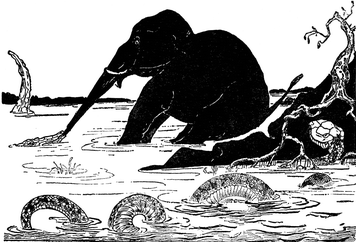 In a new, wide-ranging essay, Eugene V. Koonin of the National Center for Biotechnology Information, National Library of Medicine, National Institutes of Health, considers the fitness landscapes of prokaryotes (large populations) versus eukaryotes (small populations). The latter allow for greater inventiveness, he concludes. To cope with this inescapable burden [introns], eukaryotes have evolved a global solution, the highly efficient splicing machinery. ...The nucleus itself may have evolved as a damage-control device that prevents the exit of unprocessed transcript to the cytoplasm. (How are these not more "Just-So" stories?)
In a new, wide-ranging essay, Eugene V. Koonin of the National Center for Biotechnology Information, National Library of Medicine, National Institutes of Health, considers the fitness landscapes of prokaryotes (large populations) versus eukaryotes (small populations). The latter allow for greater inventiveness, he concludes. To cope with this inescapable burden [introns], eukaryotes have evolved a global solution, the highly efficient splicing machinery. ...The nucleus itself may have evolved as a damage-control device that prevents the exit of unprocessed transcript to the cytoplasm. (How are these not more "Just-So" stories?)
Koonin is well aware of horizontal gene transfer (HGT) and de novo genes. Also, mobile genetic elements (MGE) ...genes have been recruited for essential functions at key stages of eukaryotic evolution. But where the programming for these functions comes from is not a concern to him. If he wants a theory of evolution with testable predictions, may we suggest testing them with quarantined experiments in biology or computer models?
 Splendor and misery of adaptation, or the importance of neutral null for understanding evolution, by Eugene V. Koonin, doi:10.1186/s12915-016-0338-2, BMC Biology, 23 Dec 2016. Splendor and misery of adaptation, or the importance of neutral null for understanding evolution, by Eugene V. Koonin, doi:10.1186/s12915-016-0338-2, BMC Biology, 23 Dec 2016.
 Testing Darwinism versus Cosmic Ancestry and Testing Darwinism versus Cosmic Ancestry and
 The Evolution Prize are related local webpages. The Evolution Prize are related local webpages.
 Neo-Darwinism: The Current Paradigm has a section with links about Fitness Landscapes. Neo-Darwinism: The Current Paradigm has a section with links about Fitness Landscapes.
| 11 Jan 2017 |
What'sNEW about HGT  | | |
You can see rapid evolution in retroviruses over short time frames, but this is new evidence that they've been around for hundreds of millions of years — Michael Worobey, evolutionary virologist, University of Arizona.
New research provides another example of genetic systems older than standard darwinism expects them to be. The report also confirms that the studied retroviruses can be transferred across diverse species and become permanently installed into their genomes. Genetic programs that look too old, and horizontal gene transfer
(HGT) by viruses are phenomena that surprise darwinism and support cosmic ancestry.
 Ancient retroviruses emerged half a billion years ago, by Carrie Arnold, Nature, 10 Jan 2017, re: Ancient retroviruses emerged half a billion years ago, by Carrie Arnold, Nature, 10 Jan 2017, re:
 Marine origin of retroviruses in the early Palaeozoic Era, by Pakorn Aiewsakun & Aris Katzourakis, doi:10.1038/ncomms13954, Nature Communications, online 10 Jan 2017. Marine origin of retroviruses in the early Palaeozoic Era, by Pakorn Aiewsakun & Aris Katzourakis, doi:10.1038/ncomms13954, Nature Communications, online 10 Jan 2017.
 Viruses..., Viruses...,
 Metazoan Genes Older Than Metazoa? and Metazoan Genes Older Than Metazoa? and
 Genes Older Than Earth? are related local webpages. Genes Older Than Earth? are related local webpages.
 Either life developed here super-fast or it came full-on as DNA life from afar — Gary Ruvkun, (pictured) a principal investigator for The Search for Extraterrestrial Genomes.
Either life developed here super-fast or it came full-on as DNA life from afar — Gary Ruvkun, (pictured) a principal investigator for The Search for Extraterrestrial Genomes.
 In Search of Panspermia, by Marc Kaufman, Many Worlds (+NASA), 05 Jan 2017. In Search of Panspermia, by Marc Kaufman, Many Worlds (+NASA), 05 Jan 2017.
 The Search for Extraterrestrial Genomes (SETG), homepage at MIT. The Search for Extraterrestrial Genomes (SETG), homepage at MIT.
 The most conserved genome segments for life detection on Earth and other planets, by Thomas A. Isenbarger, Christopher E. Carr, Sarah Stewart Johnson, Michael Finney, George M. Church, Walter Gilbert, Maria T. Zuber and Gary Ruvkun, doi:10.1007/s11084-008-9148-z, Orig Life Evol Biosph, 2008. The most conserved genome segments for life detection on Earth and other planets, by Thomas A. Isenbarger, Christopher E. Carr, Sarah Stewart Johnson, Michael Finney, George M. Church, Walter Gilbert, Maria T. Zuber and Gary Ruvkun, doi:10.1007/s11084-008-9148-z, Orig Life Evol Biosph, 2008.
 Thanks, Google Alerts. Thanks, Google Alerts.
 Introduction: More Than Panspermia has historical information. Introduction: More Than Panspermia has historical information.
 What Is Life? is a related local webpage. What Is Life? is a related local webpage.
 The RNA World and Other Origin-of-Life Theories is a related local webpage. The RNA World and Other Origin-of-Life Theories is a related local webpage.
|
 The big bang theory has many committed advocates, but doubts remain among an informed minority. These doubts get a full hearing in Facts and Speculations in Cosmology by Jayant Narlikar and Geoffrey Burbidge (2008). A brief history of early cosmology introduces a more comprehensive story of recent developments, with frequent illustrations and no difficult equations. The authors expose key assumptions unsupported by direct observation (e.g. inflation, cold dark matter, dark energy) that big-bangers must make, and numerous observations (e.g. anomalous red shifts) they must ignore.
The big bang theory has many committed advocates, but doubts remain among an informed minority. These doubts get a full hearing in Facts and Speculations in Cosmology by Jayant Narlikar and Geoffrey Burbidge (2008). A brief history of early cosmology introduces a more comprehensive story of recent developments, with frequent illustrations and no difficult equations. The authors expose key assumptions unsupported by direct observation (e.g. inflation, cold dark matter, dark energy) that big-bangers must make, and numerous observations (e.g. anomalous red shifts) they must ignore.


 Uniformitarianism... leads us to conclude that haematite tubes and filaments within the NSB jaspers are the mineralized remains of bacterial sheaths and extracellular filaments. ...that are at least 3,770 million and possibly 4,280 million years old.... These words come from an article by an international multi-disciplinary team analysing sediments apparently from ancient hydrothermal vents. If correct, it would mean that life on Earth may have begun even earlier than we thought. It would also strengthen the case that life could thrive near hydrothermal vents on ocean worlds like Europa, Enceladus and others.
Uniformitarianism... leads us to conclude that haematite tubes and filaments within the NSB jaspers are the mineralized remains of bacterial sheaths and extracellular filaments. ...that are at least 3,770 million and possibly 4,280 million years old.... These words come from an article by an international multi-disciplinary team analysing sediments apparently from ancient hydrothermal vents. If correct, it would mean that life on Earth may have begun even earlier than we thought. It would also strengthen the case that life could thrive near hydrothermal vents on ocean worlds like Europa, Enceladus and others.
 The distribution of recognized protein superfamilies shows extensive overlap among the 3 domains of life (diagram). The "complexity early" which this distribution reconfirms is a jarring surprise for darwinists. We wish the surprise would prompt them to notice cosmic ancestry, which predicts, "Life can only descend from ancestors at least as highly evolved as itself." Meanwhile, mainstream speculations about the origin of life and the tree of life must be wrong. Two experts in "the structural classification of proteins" (SCOP), discuss its use and implications in a recent interview:
The distribution of recognized protein superfamilies shows extensive overlap among the 3 domains of life (diagram). The "complexity early" which this distribution reconfirms is a jarring surprise for darwinists. We wish the surprise would prompt them to notice cosmic ancestry, which predicts, "Life can only descend from ancestors at least as highly evolved as itself." Meanwhile, mainstream speculations about the origin of life and the tree of life must be wrong. Two experts in "the structural classification of proteins" (SCOP), discuss its use and implications in a recent interview:
 Archeae contain many eukaryotic signature proteins (ESPs). Some of them previously identified are GTPases, actin homologues, ubiquitin modifier system components and homologues of eukaryotic protein translocation and glycosylation pathways.
Archeae contain many eukaryotic signature proteins (ESPs). Some of them previously identified are GTPases, actin homologues, ubiquitin modifier system components and homologues of eukaryotic protein translocation and glycosylation pathways.

 Ceres ...joins Mars and several satellites of the giant planets in the list of locations in the solar system that may harbor life. The dwarf planet has water. Now, infrared spectra taken from the orbiting Dawn spacecraft reveal organic-rich regions in and around its ~50-kilometer Ernutet crater.
Ceres ...joins Mars and several satellites of the giant planets in the list of locations in the solar system that may harbor life. The dwarf planet has water. Now, infrared spectra taken from the orbiting Dawn spacecraft reveal organic-rich regions in and around its ~50-kilometer Ernutet crater.

 A virus that infects bacteria listens to messages from its relatives when deciding how to attack its hosts.
A virus that infects bacteria listens to messages from its relatives when deciding how to attack its hosts.



 To make sense of this apparent absurdity within a strictly darwinian paradigm, Krupovic and Koonin ultimately imagine unexplained, unobserved "origins." But we endorse their fully-grounded observations:
These findings reveal a stronger connection between the virosphere and cellular life forms than previously suspected. ...this view is compatible with the scenario of multiple recruitment events occurring throughout the course of evolution of life.
To make sense of this apparent absurdity within a strictly darwinian paradigm, Krupovic and Koonin ultimately imagine unexplained, unobserved "origins." But we endorse their fully-grounded observations:
These findings reveal a stronger connection between the virosphere and cellular life forms than previously suspected. ...this view is compatible with the scenario of multiple recruitment events occurring throughout the course of evolution of life.
 In a new, wide-ranging essay, Eugene V. Koonin of the National Center for Biotechnology Information, National Library of Medicine, National Institutes of Health, considers the fitness landscapes of prokaryotes (large populations) versus eukaryotes (small populations). The latter allow for greater inventiveness, he concludes. To cope with this inescapable burden [introns], eukaryotes have evolved a global solution, the highly efficient splicing machinery. ...The nucleus itself may have evolved as a damage-control device that prevents the exit of unprocessed transcript to the cytoplasm. (How are these not more "Just-So" stories?)
In a new, wide-ranging essay, Eugene V. Koonin of the National Center for Biotechnology Information, National Library of Medicine, National Institutes of Health, considers the fitness landscapes of prokaryotes (large populations) versus eukaryotes (small populations). The latter allow for greater inventiveness, he concludes. To cope with this inescapable burden [introns], eukaryotes have evolved a global solution, the highly efficient splicing machinery. ...The nucleus itself may have evolved as a damage-control device that prevents the exit of unprocessed transcript to the cytoplasm. (How are these not more "Just-So" stories?)